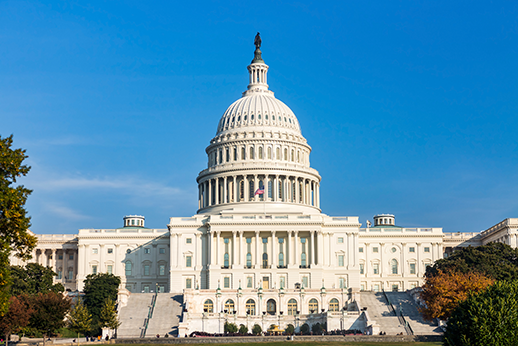
Workers Lacking 401ks Need a Solution
Although COVID-19 has exposed alarming gaps in a health insurance system that revolves around the employer, the Affordable Care Act is one potential solution for workers who lack the employer coverage.
There is nothing equivalent on the retirement side, however.
Many workers between ages 50 and 64 are in jobs that provide neither health insurance nor a retirement savings plan. But, in contrast to the health insurance options available to them, “no retirement saving vehicle appears effective in helping older workers in nontraditional jobs set aside money for retirement,” concluded a new analysis of workers in these nontraditional jobs.
Nontraditional workers who want to save for retirement are left with two options: their spouse’s 401(k) savings plan or an IRA operated by a bank, broker or financial firm.
A spouse’s 401(k) hasn’t been an effective fallback for a couple of reasons. First, a substantial number of the workers who lack their own 401(k)s are not married. And second, if they are married to someone with a 401(k), they’re not any better off. The researcher found that married people currently contributing to 401(k)s do not save more to compensate for the spouse without a 401(k), reinforcing other research showing these couples don’t save enough for two.
The other option – an IRA – is open to everyone. But only a small fraction of Americans currently are saving money in IRAs, and most of them already have a 401(k). So IRAs, in practice, aren’t doing much for the people who need the help: workers who lack employer benefits.
Some state governments, out of concern for their residents’ retirement prospects, have established automatic IRAs. These programs require employers who don’t offer a retirement plan to enroll their employees in the state-designed IRA, giving them the ability to opt out.
While these auto-IRAs have potential, just eight states have approved the programs to date. Only three programs are up and running, though one is in California, the largest state.
The federal government has also initiated various savings programs over the years, but they’ve had minimal impact.
Given the large gap in our employer-based retirement system, the researcher concludes that the mandatory auto-IRA seems like the most promising solution.
Squared Away writer Kim Blanton invites you to follow us on Twitter @SquaredAwayBC. To stay current on our blog, please join our free email list. You’ll receive just one email each week – with links to the two new posts for that week – when you sign up here. This blog is supported by the Center for Retirement Research at Boston College.
Comments are closed.







A mandatory IRA is a good solution for those who earn enough to be able to get by on, say, 90% of their income. What about those who are living on the cusp of the poverty line who need every last dime to provide the basics of shelter, food and clothing? Our social safety net in this country is woefully thin.
The Democrats are now voting to bail out states around 900 Billion for shortfalls and a big part of that is underfunded pension funds. One example is New Jersey with 140 Billion in unfunded pension liabilities. Just add another trillion to the bill and give it to private citizens to fund IRA’s, this way they get both private and public bailouts. Great idea!
You’re ignoring some other possibilities, like investing the unspent balance of an HSA, using a taxable brokerage account, or even deferred annuities. And as you correctly pointed out, IRA’s are available to anyone with earned income, although few actively contribute to them. It seems to me the issue is one of awareness, rather than the statement “no solutions available”. There are solutions, and more people should be taking advantage of them.
Retirement preparation won’t occur unless it is a priority. 20+% of eligible workers don’t contribute to their employer-sponsored plan. Almost half either don’t contribute or don’t contribute enough to qualify for the full employer contribution.
So, two comments:
First, plans (and IRAs) need “liquidity without leakage” – to save “along the way” to retirement. Only 12% of eligible Americans save in an IRA – perhaps because the only liquidity is a cash-out. Where the interest rate on the plan loan is lower than the interest rate on loan principal from commercial sources AND exceeds the interest rate on fixed income investments (generally true today), borrowing from a plan that facilitates repayment will improve BOTH household wealth AND retirement preparation.
Second, state IRA plans, like OregonSaves, are suboptimal – potentially counterproductive – offering a false sense of retirement preparation. As of June 2019, OregonSaves had been in place for two years, with 40,000+ accounts, holding $22.7 million in assets. That’s an average of $558. Now, averages are not medians, but my 40+ years of benefits experience tells me that the median account balance is likely much lower than the average. The first $1,000 in assets in Oregon Saves is in a cash equivalent account, with a next to 0% return. A recent review of the OregonSaves website reconfirms that the admin expense may still exceed 100 basis points. So, my guesstimate would be that more than two-thirds of OregonSaves participants have or had an account balance of less than $1,000, and that they actually LOST money on every dollar contributed to OregonSaves.
While OregonSaves does “reduce search costs”, the costs an individual would incur to find a reputable IRA provider offering an IRA superior to the OregonSaves product is minimal – just turn on the TV. For example, you can open a Fidelity IRA with no admin fees, and invest in index funds with no asset management fees. In fact, if Oregon was really interested in the welfare of their participants, they would encourage them to opt out and seek out better IRA alternatives – or encourage other firms to solicit OregonSaves participants to roll-over assets and start contributing via electronic banking using a more cost effective solution.
When my wife and I retired, we both had IRAs, as well as 401(k)s and pensions through our previous employer. But we had more saved in after-tax investments than we did in any one of those other tax-advantaged vehicles.
Though 401(k)s provide great opportunities for retirement savings, take full advantage of IRAs as well as all the other after-tax options available for everyone.
Take advantage of available opportunities. Sitting back and waiting for a big change is at your own financial peril.